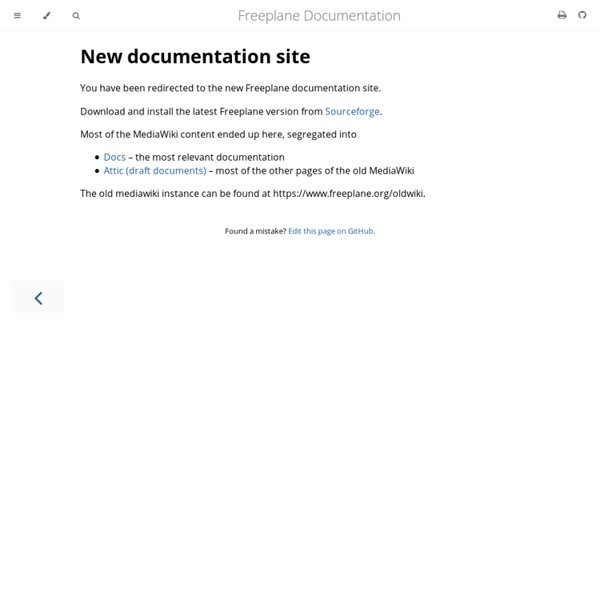List of concept- and mind-mapping software
Concept-mapping and mind-mapping software are used to create diagrams of relationships between concepts, ideas or other pieces of information. It has been suggested that the mind mapping technique can improve learning/study efficiency up to 15% over conventional note taking.[1] There are a number of software packages and websites that allow the creation of, or otherwise support mind maps. File format[edit] Using a standard file format allows interchange of files between various programs. Many of the programs listed below support the mm format used by FreeMind. The mm format is an XML text format consisting of tagged objects.
Press Space or double-click to edit
Capture ideas at the speed of thought – using a mind map maker designed to help you focus on your ideas and remove all the distractions while mindmapping. Create unlimited mind maps for free, and store them in the cloud. Your mind maps are available everywhere, instantly, from any device.
Mind iT - Intelligent Bookmarking
Browse the "About MindiT" LinkMap for quick orientation Table of Content GeneralLinkMaps OperationsSharingBest PracticesThe Next Big 3 Features Under Development General What is MindiT? MindiT is a free online utility to gather and manage snippets of infromation.
The ten mind mapping techniques of Tony Buzan of BuzanThink
There is a set of ten guidelines that you can use to organize your thinking via mind maps . We’ve introduced mind maps here at Thoughtwrestling in previous posts. Now we’re going to share some of the best mind mapping tips with you, tips that came from the inventor of mind mapping. Who invented mind maps? Tony Buzan is widely credited with coining the term mind map . Mind maps are a means of organizing information visually, showing how big ideas are made of big pieces, which in turn are composed of smaller pieces.
Analyzing interactions in Twitter. The case of an exploratory seminar
In this post I’ll explore the social interactions in Twitter that were made by participants and supervisors of an exploratory seminar as well as the external experts that joined the discussion. The seminar was designed to let students explore the power of Social Media in a real world scenario with the goal to enable participants to value the strengths and weaknesses of such tools in a co-operative working context. Therefore, one key requirement in the learning design was for students to communicate and collaborate with nothing else than Social Media tools. In accordance to the rationales of constructivist learning theory (Jonassen, 1999), students should actively create their own knowledge about the practical use of Social Media tools in realistic scenarios. We introduced Social Software that can easily be used as learning services and stipulated the use of Twitter for informal communication and Delicious for sharing interesting bookmarks.
Visual Thinking Evolution
A mind map is a diagram used to represent words, ideas, tasks, or other items linked to and arranged around a central key word or idea. Especially in British English, the terms spidergram and spidergraph are more common,[1] but they can cause confusion with the term spider diagram used in mathematics and logic. Mind maps are used to generate, visualize, structure, and classify ideas, and as an aid to studying and organizing information, solving problems, making decisions, and writing. The elements of a given mind map are arranged intuitively according to the importance of the concepts, and are classified into groupings, branches, or areas, with the goal of representing semantic or other connections between portions of information. Mind maps may also aid recall of existing memories.
Debategraph
DebateGraph is an award-winning, web-platform for visualizing and sharing networks of thought – and opening reasoning and action to collaborative learning and iterative improvement.Create your own maps and explore and contribute to maps created by amongst others: CNN, the White House, the UK Prime Minister's Office, The Independent, and the Foreign Office. DebateGraph is being used in over 100 countries and helping people reason and learn together more effectively in many different fields, including: education, health, governance, media, publishing, environment, conflict resolution, conferences, group facilitation, and public consultation and planning.There's no limit to the number of people who can collaborate on maps, and you are welcome to start building and sharing public and private maps on any topic now. Copyright © 2014 Thoughtgraph Ltd. All Rights Reserved.
Cyborganize
Are you sick of running around with too many things in your head? Do you want a way to automatically process information to find your next action? Cyborganize does all that, plus more.



